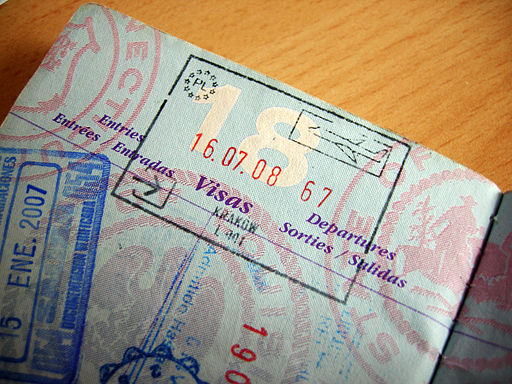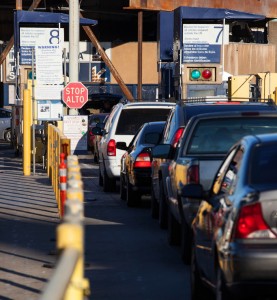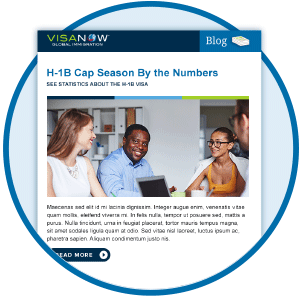By VISANOW Contributor|2015-07-08T11:59:17-05:00May 24, 2013|
1. Get Your Social Security Number
Once you have received your DACA work permit (Employment Authorization Card or I-766), you can apply for a Social Security number. The government will not automatically issue you a Social Security number so this extra step is your responsibility.
To obtain a Social Security Card, you must visit a Social Security office in person (find your local office at www.socialsecurity.gov/locator) to complete and sign an application. Bring your DACA work permit and proof of age and identity, which is an original document or a certified copy of one of the following:
- Foreign birth certificate
- Foreign passport
- U.S. military record
- U.S. military identification card
- Religious record showing age or date of birth
- U.S. driver’s license
- U.S. state-issued identification card
- School record showing age or date of birth
- School identification card
- Copy of medical record
Please note Social Security does not accept photocopies or notarized copies of these documents. After your documents are verified, you should receive your Social Security Card in the mail within 1-4 weeks.
2. Transfer your credit history to your new SSN
You may have been paying taxes and building a credit history through an ITIN (Individual Tax Identification Number). This is different from a Social Security number, and once you have a Social Security number, you can no longer use your ITIN.
If you have been working and building a credit history with an ITIN, the three groups you need to contact in order to switch everything to your new SSN are:
- The IRS
- The 3 Credit Bureaus: Transunion, Experian, and Equifax
- The financial institution or bank you use for your personal accounts
For the IRS and credit bureaus, you must mail a letter to all of them. For your bank, you can usually make the transfer in person at your local branch. Learn more about transferring your credit history here.
3. Get your Driver’s License or State ID (if you don’t live in AZ or NE)
As long as you don’t live in Arizona or Nebraska, this step is pretty straightforward. Most states will require you to have a Social Security Number to obtain a driver’s license. You will also most likely need proof of residence in your state, which is easy to obtain as you will already have provided it for your DACA application.
4. Apply for jobs
You can start applying for jobs before you get DACA approval, but you will not be able to accept any jobs before you get your DACA work permit (EAD) in the mail. Most DACA applicants have never had the chance to make money legally in the U.S., so take advantage of this opportunity!
5. Look for scholarships and financial aid if you want to go to college or university
Learn all about scholarships and financial aid for DACA students in our previous blog post.
Getting a Social Security number will open the doors to many more scholarships and aid than if you did not apply for one. Also, tuition and educational benefits for DACA students vary by state, so be sure to research what special benefits (if any) are available in your home state.
6. Resolve any tax issues you may have
If you worked as an undocumented immigrant in the U.S., it is in your best interest to resolve any financial or tax issues so your future residence is not in jeopardy. If you have been working and not paying your taxes, seek the advice of a tax accountant. If you have been paying taxes, make sure you have been paying the proper amount.
7. If you already have a job, find out what to say to your employer about DACA
Talking to your employer about DACA can be tricky, and in some cases might require you to consult a lawyer first. Luckily, DACA recipients have not reported many issues with their new status interfering with their employment. Learn more about DACA and your employment rights here.
8. Get travel authorization (Advance Parole) if you really need it
Immigrants with DACA approval can travel anywhere in the United States without advance approval and without fear of deportation. This includes Alaska and Hawaii as well as U.S. territories including Puerto Rico, Guam, U.S. Virgin Islands, and the Commonwealth of the Northern Mariana Islands. However, you cannot have a flight layover in any country besides the United States on your way to these destinations.
To travel internationally with DACA, applying for Advance Parole is currently your only option. To be granted Advance Parole, you must apply at least 90 days in advance to USCIS, pay the $360 application fee, and abide by very strict rules. You must prove you are traveling for humanitarian, educational, or work purposes and your trip must be laid out to USCIS in extreme detail.
If you have DACA and try to travel outside the U.S. without getting Advance Parole first, your DACA status will be terminated immediately and you may be barred from returning to the U.S. Even if it is on accident, crossing the border outside of the U.S. or a U.S. territory could jeopardize your DACA status.
Remember that if immigration reform passes and you are out of the country, you could very well be disqualified from a path to citizenship. Talk to an attorney before leaving the country once you have DACA, because you don’t want to lose this wonderful opportunity.
9. Stay up to date on DACA news and immigration laws
DACA is a very new program that is subject to change. No one knows yet what the specific procedures will be to renew your work permit after the 2 years are up. No one knows when comprehensive immigration reform will pass, and no one is completely sure what all the extra benefits will be for a DACA-mented DREAMer once it finally becomes law. It’s in your best interest to see where the government stands on DACA and immigration at any given moment, since it will have a great impact on your life.
10. Talk to other DREAMers about DACA
DACA is the best and only legal option currently available to DREAMers in the United States. If you have friends or family who qualify for DACA, tell them why they should apply. Many undocumented immigrants have fears and misconceptions about DACA, and as someone who has already gone through the process personally, you can lessen their fears by sharing your experience and helping them through the process.







